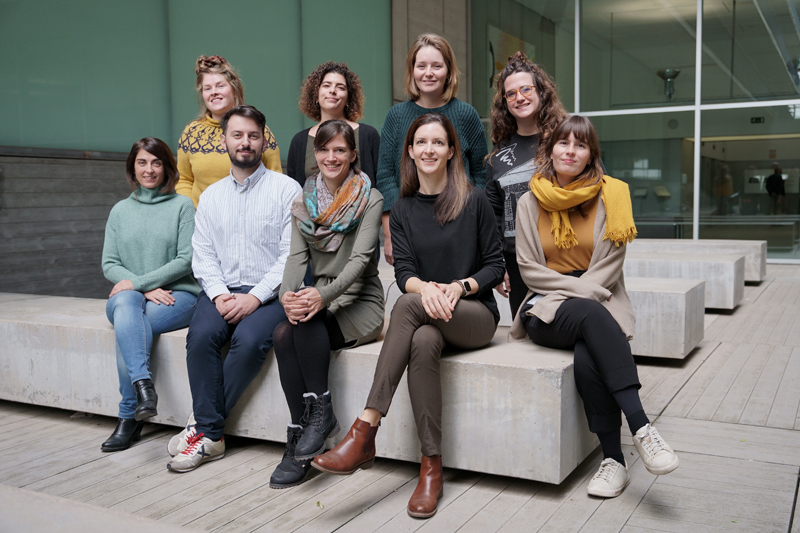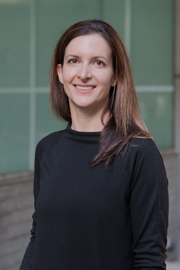 Ruprecht Lab
Ruprecht Lab
 Quantitative Cell Biology
Quantitative Cell Biology
- Group page
- Research lines
- Group members
- Publications
Notice: As of February 1st 2025, Dr. Verena Ruprecht is based at University of Innsbruck (UIBK), in Austria, although she holds a dual affiliation with the CRG until April 30th 2026.
From February 2025 Dual affiliation: Centre for Genomic Regulation (CRG), Barcelona (Spain) and University of Innsbruck (Austria)
From September 2016 Group Leader in the Cell & Developmental Biology program at the Centre for Genomic Regulation (CRG), Barcelona (Spain)
2011-2015 Postdoc at the Institute of Science and Technology (IST) Austria, Klosterneuburg (Austria), Advisors: Carl-Philipp Heisenberg and Michael Sixt
2010 Visiting Scientist at the Centre d'Immunologie de Marseille-Luminy (CIML), Marseille (France) in the laboratory of Didier Marguet
2010 PhD in Biophysics Johannes Kepler University, Linz (Austria), Advisor: Gerhard J. Schuetz
News
Cancer cell ‘decathlon’ to help predict tumour aggressiveness and metastasis (26/04/2023)
This European Innovation Council aims to quantify a cancer cell’s ability to respond to environmental stress that threatens its survival, a key indicator of tumour progression and aggressiveness.
Earliest signs of an immune response found in developing embryos (10/02/2021)
Findings may lead to new clinical efforts in treating infertility or early miscarriages
Verena Ruprecht selected as EMBO Young Investigator (01/12/2020)
The new EMBO Young Investigators will receive financial and practical support for a period of four years, starting in January 2021.
When feeling the pinch, nuclei instigate cells to escape crowded spaces (16/10/2020)
In a new study published today in the journal Science, researchers reveal that squeezing a cell to the point where its nucleus starts to stretch triggers the activation of motor proteins which in turn transform the cell’s cytoskeleton so that it can flee a packed environment.
How do sperm and egg fuse together? New funding to uncover mysteries of fertilisation (03/04/2020)
Fertilisation is a well-documented natural process, yet despite its fundamental role in sparking life, little is known about the exact physical steps that occur when a sperm and egg meet for the first time.
Summary
Our lab studies the cellular dynamics in embryo development - how cells move, control their shape and dynamically interact - to identify fundamental mechanism of multicellular self-organization and robust tissue development in the presence of noise and errors.
When an egg is fertilised, cells rapidly divide and dynamically organize to shape the embryo and build functional tissues. The actin cytoskeleton is the major structural scaffold and force-generating unit that enables cells to change their shape, move within tissues and mechanically interact with each other. We are interested in the molecular and biophysical mechanisms that control cell shape, migration and multicellular organization in the early embryo. We further study how the tissue microenvironment and stress conditions regulate morphodynamic migration plasticity and dynamic cell functions such as phagocytic activity. With our work we aim to address how developmental robustness and innate immune responses are established in the early embryo and how adaptive cell behaviours impact on disease processes such as cancer cell metastasis.
Our research follows an interdisciplinary approach combining genetic and biophysical methods with multi-scale imaging and mathematical modelling. We use zebrafish embryos as a main model system for in vivo studies, which offer optical transparency and easy accessibility to genetic and biophysical manipulation. We further design biomimetic 3D ex-vivo culture assays to reconstitute physiological single cell dynamics and multicellular organization patterns via bottom-up principles.
The ultimate goal of our lab is to develop a mechanistic understanding of single and collective cell dynamics in early embryogenesis and to study their role in tissue stress adaptability and metastatic cell invasion.
Research Lines
- Cell migration and morphodynamic plasticity
- Mechanisms of cellular mechanosensing and -transduction
- Phagocytosis and innate immunity in early embryogenesis
- Multicellular dynamics in tissue morphogenesis
As an interdisciplinary research team, we are considering applications from highly motivated students and postdocs with a background in biology, physics, engineering or a related field. Please consult the CRG jobs webpage or directly contact verena.ruprecht@crg.eu for open job opportunities.
Funding Acknowledgements

The project “Control mechanisms and robustness of multicellular symmetry breaking” has received funding from the European Union's Horizon Europe under the grant agreement No BREAKDANCE_101072123 (01/01/2024-31/12/2029)

PID2020-117011GB-I00 funded by MCIN/AEI/ 10.13039/501100011033
- Cell migration and morphodynamic plasticity
- Mechanisms of cellular mechanosensing and -transduction
- Phagocytosis and innate immunity in early embryogenesis
- Multicellular dynamics in tissue morphogenesis




